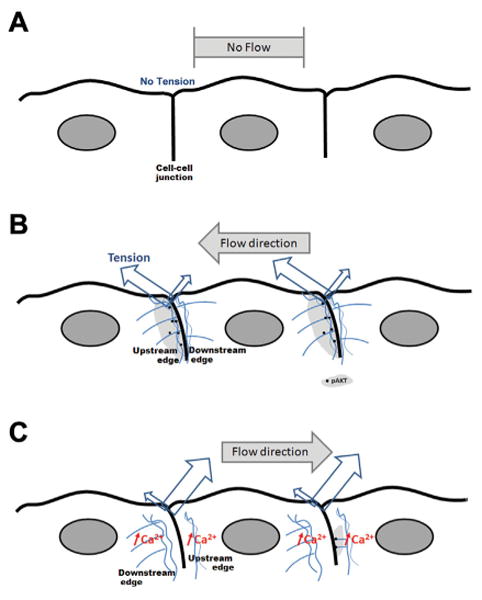Fig. 6.

Relationship between subcellular pAkt-1 localization to shear stress, increased membrane tension, and actin cytoskeleton. As demonstrated by Fung and Liu [1993] and Melchior and Frangos [2010], the cell–cell junction adapts morphologically by inclination in direction of flow and the region immediately downstream of the junction is the site of greatest membrane tension. We propose that Akt-1 activation correlates with regions of high tension and an intact actin cytoskeleton. Thus, while no tension is present in static condition (A), an orthograde flow induces phosphorylation of Akt-1 at junctional upstream regions where tension is highest and the actin cytoskeleton is intact (light gray, B). C: Retrograde flow also produces high tension in the upstream region, but also induces increases in intracellular calcium [Melchior and Frangos, 2010] which destabilize/depolymerize the actin cytoskeleton (blue). Thus, retrograde flow leads to reduced upstream localization of pAkt-1.
